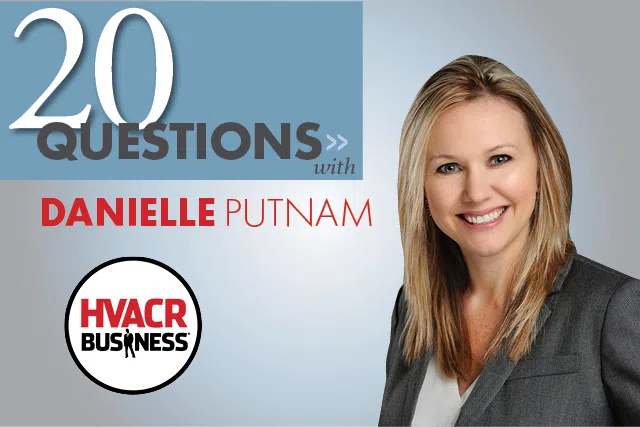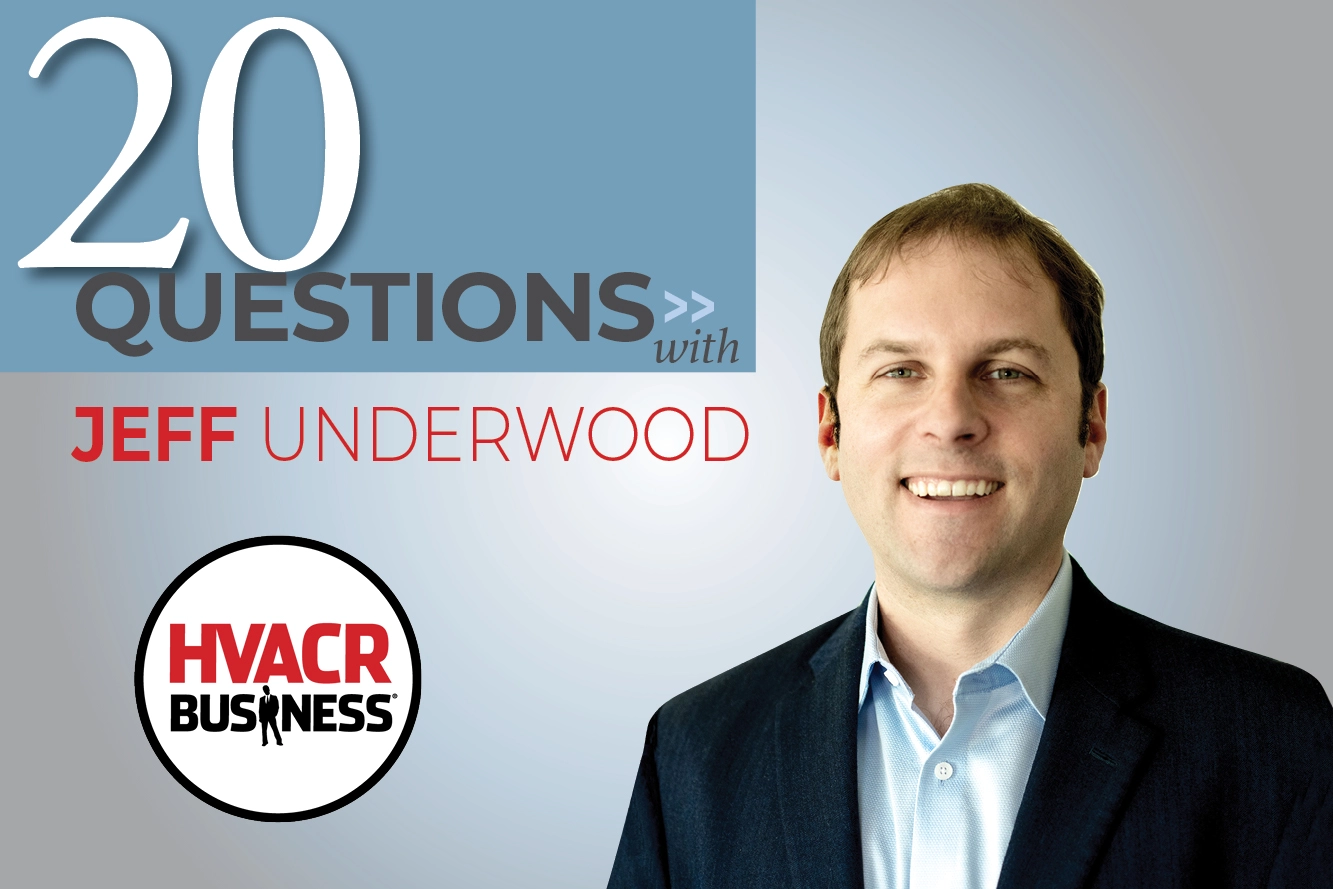We sat down with Danielle Putnam, president of The New Flat Rate and immediate past president of Women in HVACR. Putnam discussed the growing up in the industry, learning to lead a business and recruiting women into the field.
1. What’s your industry background?
My dad started his own electrical company when I was seven. And so, my siblings and I spent that summer passing out flyers everywhere in town. We had an early introduction into the trades. Later on, he bought an HVACR and plumbing company as well.
2. Did you work at the business?
I did. In high school my junior and senior year, I was homeschooled, so I was able to work full time in the office. At 17, I worked in the office, ran parts and even worked inventory in the warehouse.
3. What did you do after high school?
I went to Bible school in Texas for four years. It was an internship; so, I worked in the marketing department out there and they took a lot of students around the world on mission trips. I learned a lot.
4. How’d you get back into the trades?
After those four years, my dad called and said he needed some help. I went and worked with him for another year. After that, I went up to Portland, Ore. for a year and worked for a contractor doing marketing for them.
5. But then you got into tech?
Yes, after Portland, I ended up in Southern California working for a tech company in 2005. It was a startup; I was the second employee. We went public in 2007 and I was doing business development, flying all over the U.S.
6. What was it like at a startup?
We did a lot of really cool, fun things. Being a startup company, we were just learning and struggling forward. My career was a lot of trial and error. After five and a half years, they got bought out by a large company.
7. What was your next career move?
My dad called and told me about an idea he had. He kept calling and calling with these ideas for the New Flat Rate. I told him to quit giving away all his ideas for free and start a company. And he says, “Well, I can’t do without you. I need your help.”
8. So you started a new company?
I loved my career path, I loved the company I was with, and I was really set up well in the merger. But, I knew if I didn’t help my dad I’d regret it for the rest of my life. I turned in my resignation, moved home to Dalton, Ga., and my dad and I spent all of 2011 working in his garage for 12 hours a day, seven days a week, building the New Flat Rate. And by 2012 we had a product to sell.
9. What was your first step?
My dad had been working with Jay Abraham, a top marketing and business consultant, who said, “You have an idea, but that means nothing until you beta test it. I have to see some proof.” So, my dad shot a message out to Service Roundtable, saying we’d developed a new pricing system and asked if anyone would test it for us.
10. How did the beta testing go?
A bunch of companies responded, but eight came into the first round of beta tests. We took a bunch of sheets of paper and laminated them and three hole punched them and mailed out three ring binders to these eight companies. We said, “Hand these pages to your technicians, have them go into the home, but don’t try to sell the customer, just present the page and let the customer choose and then report back to us every Friday for four weeks.”
11. And what happened?
Every Friday we met with these eight companies. There was no training, no handholding, nothing ... but they were all seeing an average increase of $200 per service ticket. The beta test showed that the system put more money in contractor’s pockets, and that’s what we wanted to do and why we wanted to go into business anyway.
12. How important was feedback?
We had to have it. After barely a year, we started to get requests from contractors to come out and train them. We’d never thought of that. And then they started asking for training and coaching onsite. So, we started doing ride-alongs too. We’re always out in the field with the contractors on the front lines, so we constantly have feedback and are able to advance and tweak and change and add as times change.
13. Can you explain the New Flat Rate?
It’s a menu pricing system. There are five price points for anything diagnosed in the home. There’s no selling required. The technician simply shows the page to the customer and the customer can choose from the five options. Ten to 20 percent of the time, customers are going to choose the bottom options, which is fine because that’s your standard flat rate price anyway. But, 60 to 70 percent of the time they choose in the middle and 10 to 20 percent of the time they choose the top options. Today, we see an average service ticket increase of $246 using our system all across the U.S.
14. Does your dad still own the HVACR business?
He sold it. As you can imagine, we got too busy with New Flat Rate and our poor little HVACR company was getting put on the back burner. But, it worked out awesome because we sold it to my older brother who had been subcontracting all the installs anyway.
15. Any of your other siblings involved?
Yes. So, my older brother, Dallas, bought the HVACR company and still runs it today (and my dad consults with him on indoor air quality). My youngest brother is 17 and still in school, but in the summers he works full time for Dallas doing HVACR. I have another brother in his 20s, and he’s Dallas’ lead technician. And then in the New Flat Rate, my brother, Matt, is my vice president and our trainer. I have a sister who is my creative director and she controls all the media.
16. What’s your management style?
Always evolving. I like to do what I call the executive ride along and so my management style is very hands off, not micromanaging. Every once in a while I’ll just show up in your office, sit next to you with my laptop and say, “Hey, I’m working by you today. Don’t freak out.”
17. What’s your involvement with Women in HVACR?
I joined in 2012. I remember being at a Comfortech trade show, walking by a room with a sign that said, “Women in HVACR” and I thought, “Why was I not invited? I’m a woman, I wasn’t invited.” The next year, I was definitely there and joined the board right away.
18. How has the organization grown?
The main differentiating factor that caused tremendous growth was a few years ago when we pulled away from Comfortech and had our own, standalone conference. We went from 30 people attending our annual conference to 60 to 80 to 100. This past year we had 200 attendees and this coming September, we’ll have at least 300 in Chicago.
19. How has the growth helped?
We’ve grown our committees, our partnerships, our mentorship program, which we started a couple of years ago, our ambassador program where we’re creating a curriculum and sending volunteers out into the schools to talk about the opportunities in the trades. Collectively, we’ve been really blessed with a strong board.
20. How is Women in HVACR addressing the labor shortage?
Our mission has really stayed the same of let’s empower women in the industry and support them and grow and network and educate together. We try to connect people where we can. The sponsors have been so supportive. I think everybody’s recognizing the hiring crisis and saying, “Okay, if you guys are willing to do something, we’ll put our money behind you and help.”






